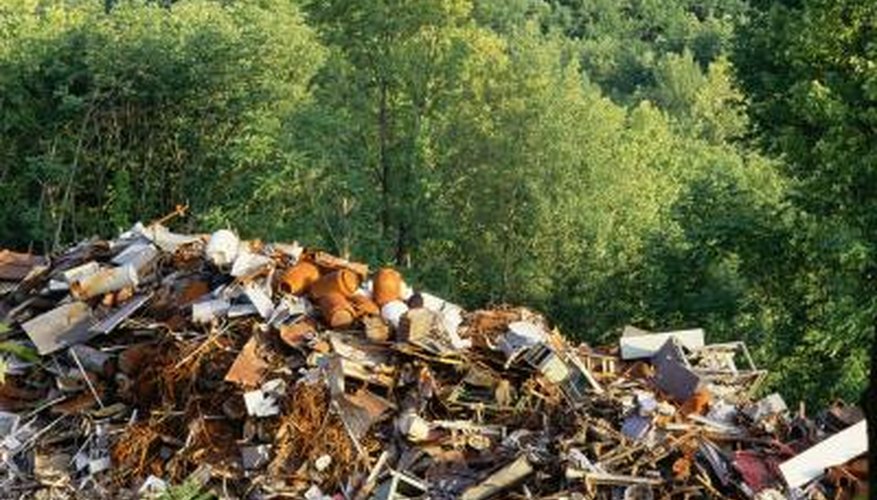Landfills, also known as garbage dumps, are the oldest form of organised waste disposal. Landfills bury the trash that we throw out every day. Although industrialised nations, such as the United States, have control over waste disposal, it still causes problems for the environment. Plants and animals are routinely and negatively effected by landfills.
Plastic Pollution

The plastic bags found to such a large extent in landfills cause many problems for animals. Millions of birds, as well as thousands of marine animals die each year due to the plastic pollution most often found in landfills. Animals ingest bags and starve and get tangled in them and drown every day. Additionally, the toxic particles in plastic bags can enter the food chain when an animal eats any part of it.
- The plastic bags found to such a large extent in landfills cause many problems for animals.
Underground Water Polution

Since landfills essentially bury our waste, some of which is toxic or at the very least unhealthy, it is not hard to believe that underground water sources are affected. Water contamination is common in areas of landfills, which can have an adverse effect on plant and animal life nearby. Leachate, or polluted liquids, also ooze out of the waste into land neighbouring landfills, which often contaminate local water supplies. This contamination can lead to the killing or sickness of both plants and animals.
- Since landfills essentially bury our waste, some of which is toxic or at the very least unhealthy, it is not hard to believe that underground water sources are affected.
- Leachate, or polluted liquids, also ooze out of the waste into land neighbouring landfills, which often contaminate local water supplies.
Soil Polution

Residual soil contamination is a problem in areas of landfills. As waste is constantly buried, the poisons and chemicals spread out over the land, contaminating more and more soil. Plants are unable to grow or live, and plant-eating animals are at a loss for food and are forced to move. Additionally, contaminated soils harbour insects and disease vectors, such as flies and rats, which could potentially harm nearby environments.
- Residual soil contamination is a problem in areas of landfills.
- Additionally, contaminated soils harbour insects and disease vectors, such as flies and rats, which could potentially harm nearby environments.
Greenhouse Gases
Organic waste decays in landfills as millions of bags of garbage are processed a day. This decay causes a rise of the production of methane, a dangerous greenhouse gas. Methane adds to the poisoning of the air that affects all life forms, including plants and animals, in the immediate area. Landfills also add to the problem of global warming overall, which can limit or destroy entire species of animals and plants.
- Organic waste decays in landfills as millions of bags of garbage are processed a day.
- Landfills also add to the problem of global warming overall, which can limit or destroy entire species of animals and plants.
